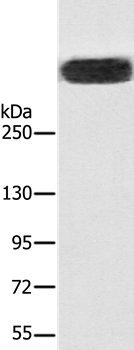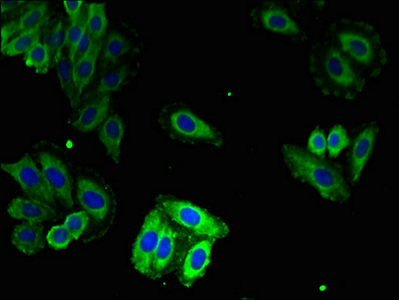![IHC-P analysis of human skeletal muscle tissue using GTX22868 Ryanodine Receptor antibody [34C]. Left : Primary antibody Right : Negative control without primary antibody Antigen retrieval : heat induced antigen retrieval was performed using 10mM sodium citrate (pH6.0) buffer, microwaved for 8-15 minutes Dilution : 1:20 IHC-P analysis of human skeletal muscle tissue using GTX22868 Ryanodine Receptor antibody [34C]. Left : Primary antibody Right : Negative control without primary antibody Antigen retrieval : heat induced antigen retrieval was performed using 10mM sodium citrate (pH6.0) buffer, microwaved for 8-15 minutes Dilution : 1:20](https://www.genetex.com/upload/website/prouct_img/normal/GTX22868/GTX22868_1183_IHC-P_w_23060620_173.webp)
IHC-P analysis of human skeletal muscle tissue using GTX22868 Ryanodine Receptor antibody [34C]. Left : Primary antibody Right : Negative control without primary antibody Antigen retrieval : heat induced antigen retrieval was performed using 10mM sodium citrate (pH6.0) buffer, microwaved for 8-15 minutes Dilution : 1:20
Ryanodine Receptor antibody [34C]
GTX22868
ApplicationsImmunoFluorescence, ImmunoPrecipitation, Western Blot, ImmunoCytoChemistry, ImmunoHistoChemistry, ImmunoHistoChemistry Frozen, ImmunoHistoChemistry Paraffin
Product group Antibodies
TargetRYR1
Overview
- SupplierGeneTex
- Product NameRyanodine Receptor antibody [34C]
- Delivery Days Customer9
- Application Supplier NoteWB: 1:5,000. IHC-Fr: 1:1,000. *Optimal dilutions/concentrations should be determined by the researcher.Not tested in other applications.
- ApplicationsImmunoFluorescence, ImmunoPrecipitation, Western Blot, ImmunoCytoChemistry, ImmunoHistoChemistry, ImmunoHistoChemistry Frozen, ImmunoHistoChemistry Paraffin
- CertificationResearch Use Only
- ClonalityMonoclonal
- Clone ID34C
- Concentration1 mg/ml
- ConjugateUnconjugated
- Gene ID6261
- Target nameRYR1
- Target descriptionryanodine receptor 1
- Target synonymsCCO, CMYO1A, CMYO1B, CMYP1A, CMYP1B, KDS, MHS, MHS1, PPP1R137, RYDR, RYR, RYR-1, SKRR, ryanodine receptor 1, central core disease of muscle, protein phosphatase 1, regulatory subunit 137, ryanodine receptor 1 (skeletal), sarcoplasmic reticulum calcium release channel, skeletal muscle calcium release channel, skeletal muscle ryanodine receptor, type 1-like ryanodine receptor
- HostMouse
- IsotypeIgG1
- Protein IDP21817
- Protein NameRyanodine receptor 1
- Scientific DescriptionThis gene encodes a ryanodine receptor found in skeletal muscle. The encoded protein functions as a calcium release channel in the sarcoplasmic reticulum but also serves to connect the sarcoplasmic reticulum and transverse tubule. Mutations in this gene are associated with malignant hyperthermia susceptibility, central core disease, and minicore myopathy with external ophthalmoplegia. Alternatively spliced transcripts encoding different isoforms have been described. [provided by RefSeq, Jul 2008]
- Storage Instruction-20°C or -80°C,2°C to 8°C
- UNSPSC12352203
References
- Liu Z, Zhang J, Sharma MR, et al. Three-dimensional reconstruction of the recombinant type 3 ryanodine receptor and localization of its amino terminus. Proc Natl Acad Sci U S A. 2001,98(11):6104-9.Read this paper
- Yamada KA, Kanter EM, Newatia A. Long-chain acylcarnitine induces Ca2+ efflux from the sarcoplasmic reticulum. J Cardiovasc Pharmacol. 2000,36(1):14-21.Read this paper
- Chan SL, Mayne M, Holden CP, et al. Presenilin-1 mutations increase levels of ryanodine receptors and calcium release in PC12 cells and cortical neurons. J Biol Chem. 2000,275(24):18195-200.Read this paper




